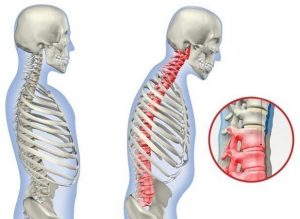 What is HLA-B27 Test?
What is HLA-B27 Test?
HLA-B27 test is a test to help diagnose ankylosing spondylitis. It may also be ordered to confirm or confirm the diagnosis of Reiter’s syndrome (reactive arthritis) or some anterior uveitis.
HLA-B27 test is not a definitive test that can be used to diagnose or rule out a disease. It is used as a single piece of evidence as a set of signs, symptoms, and laboratory tests to support or rule out the diagnosis of certain immune system diseases, such as ankylosing spondylitis and Reiter’s syndrome. Ankylosing spondylitis and Reiter’s syndromes are chronically progressive diseases that are more common in men than women, and usually the first symptoms appear when patients are in their early 30s. Ankylosing spondylitis is characterized by a group of symptoms including pain, inflammation of the urethra, eyes, and skin lesions. Often, the first signs of these autoimmune diseases are latent, and it takes several years before the characteristic degenerative changes in the bones and joints can be seen on X-ray. Anterior uveitis is seen with recurrent inflammation in the structure of one or both eyes.
HLA-B27 test can be ordered as a test group used to evaluate and diagnose conditions that cause chronic joint pain, stiffness, and inflammation similar to arthritis. Tests in this group may include RF (rheumatoid factor), ESR (erythrocyte sedimentation rate) or a CRP (C-Reactive protein). HLA-B27 is sometimes requested to assist in the evaluation of individuals with recurrent uveitis that is not due to a known disease process.
When is the HLA-B27 Test Requested?
An HLA-B27 test may be ordered from a patient with inflammation and acute or chronic pain in the spine, neck, chest or joints, the doctor may suspect an autoimmune disease associated with HLA-B27 . Doctors often have to rely on their clinical findings and HLA-B27 test results in diagnosing ankylosing spondylitis and other HLA-B27-related diseases because characteristic changes in bones may not be apparent for years. In these circumstances, HLA-B27 is not diagnostic, but may provide additional information that increases or decreases a patient’s likelihood of having ankylosing spondylitis. HLA-B27 may be ordered when a patient has recurrent uveitis.
HLA-B27 Test result
It may or may not HLA-B27. If it does, the HLA-B27 antigen is present in the body on the surface of white blood cells and other nucleated (containing a nucleus) cells. If a patient has HLA-B27 and signs of chronic pain, inflammation, and/or degenerative changes in their bones (visible by X-rays), then the presence of HLA-B27 supports the diagnosis of AS, Reiter’s syndrome, or other autoimmune disease. This is especially true if the patient is young, male, and starts experiencing the first symptoms before the age of 40.
If there is no HLA-B27, it means that the relationship does not exist. However, this does not mean that the person will not have the suspected conditions, a certain percentage of patients with these diseases are HLA-B27 negative.
It is not clinically relevant to have positive HLA-B27 in an individual who is asymptomatic or has no family history of HLA-B27-related disease. This does not help predict the likelihood that an autoimmune disease will develop. If the patient does not have a relevant disease, the presence of HLA-B27 cannot be used to determine which diseases will be present, how quickly they will develop, their severity, prognosis, or which organs they will affect.
We are working in our Test Laboratory Please call 444 7 522
The presence of HLA antigens is determined genetically. The production of these antigens is controlled by genes passed from parents to their children. If one of your family members has an HLA-B27-related disease that affects the spinal joints, you also have the HLA-B27 antigen, meaning you are at high risk for acquiring a similar disease.
With new genetic testing methods, it is possible to distinguish subtypes of HLA-B27. Fifteen different subtypes have been identified so far.
 What is HLA-B27 Test?
What is HLA-B27 Test?